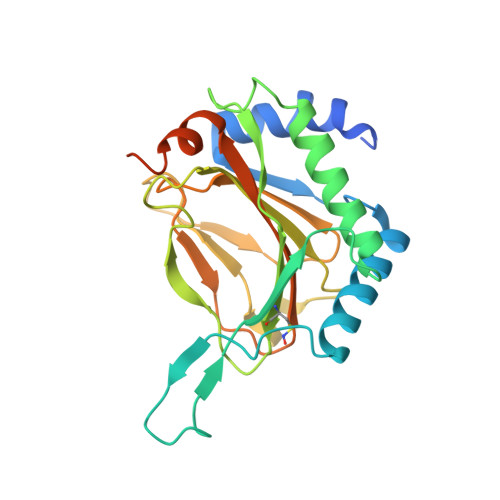Studies on the reaction of nitric oxide with the hypoxia-inducible factor prolyl hydroxylase domain 2 (EGLN1).
Chowdhury, R., Flashman, E., Mecinovic, J., Kramer, H.B., Kessler, B.M., Frapart, Y.M., Boucher, J.L., Clifton, I.J., McDonough, M.A., Schofield, C.J.(2011) J Mol Biol 410: 268-279
- PubMed: 21601578
- DOI: https://doi.org/10.1016/j.jmb.2011.04.075
- Primary Citation of Related Structures:
2Y33, 2Y34 - PubMed Abstract:
The hypoxic response in animals is mediated via the transcription factor hypoxia-inducible factor (HIF). An oxygen-sensing component of the HIF system is provided by Fe(II) and 2-oxoglutarate-dependent oxygenases that catalyse the posttranslational hydroxylation of the HIF-α subunit. It is proposed that the activity of the HIF hydroxylases can be regulated by their reaction with nitric oxide. We describe biochemical and biophysical studies on the reaction of prolyl hydroxylase domain-containing enzyme (PHD) isoform 2 (EGLN1) with nitric oxide and a nitric oxide transfer reagent. The combined results reveal the potential for the catalytic domain of PHD2 to react with nitric oxide both at its Fe(II) and at cysteine residues. Although the biological significance is unclear, the results suggest that the reaction of PHD2 with nitric oxide has the potential to be complex and are consistent with proposals based on cellular studies that nitric oxide may regulate the hypoxic response by direct reaction with the HIF hydroxylases.
Organizational Affiliation:
Chemistry Research Laboratory, Department of Chemistry, University of Oxford, Mansfield Road, Oxford OX1 3TA, UK.

















